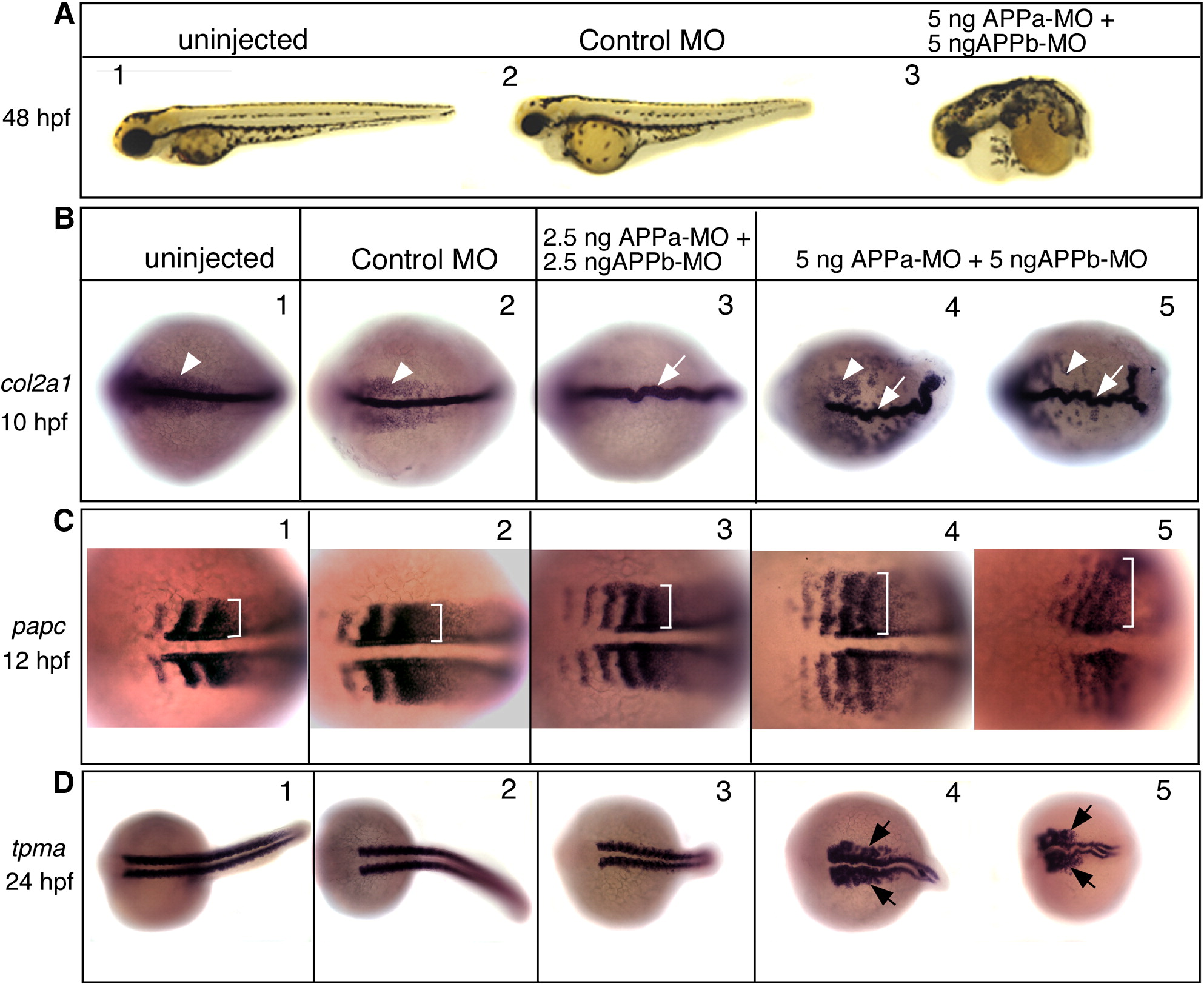Fig. 2 Knockdown of APPa and APPb results in convergent-extension defects. (A) Lateral views, anterior to the left and dorsal up, of live embryos visualized at 48 hpf. Embryos were uninjected (1) or injected with control morpholino (2), or injected with a mixture of 5 ng each of APPa-MO and APPb-MO (3). Compared to the uninjected or control-MO-injected embryos, embryos injected with APPa and APPb morpholinos have dramatic phenotypic changes that include a short body axis, a short curly tail, and small eyes. (B–D) Zebrafish APP function is required for normal convergent-extension movements. Embryos were uninjected (each panel 1), injected with control-MO (each panel 2), or injected with a low dose (each panel 3) or a high dose (each panel 4, 5) of APPa and APPb-MO mixture. (B) Embryos were fixed at the tail-bud stage (10 hpf) and labeled with type II Collagen 1-α (col2a1) RNA probe. Uninjected or control-MO-injected embryos have a thin, long, and straight notochord (arrows). The notochord is slightly thicker and misshaped in the low dose MO embryos (3), and dramatically crooked in the high dose embryos (4, 5). At the higher MO dose, endodermal precursor cells (arrowheads) are found further away from the notochord. (C) Embryos were fixed at the 4–6 somite stage (12 hpf) and labeled with paraxial protocadherin (papc) RNA probe. Brackets in each panel show somite width. Knock down of APP function results in wider somites in a dose-dependent manner. (D) Embryos were fixed at 24 hpf and labeled with α-tropomyosin (tpma) RNA probe. Compared to the control embryos, the MO-injected embryos have a short tail (3) and severely deformed and widened myotomes, especially at the higher MO dose.
Reprinted from Developmental Biology, 335(1), Joshi, P., Liang, J.O., Dimonte, K., Sullivan, J., and Pimplikar, S.W., Amyloid precursor protein is required for convergent-extension movements during Zebrafish development, 1-11, Copyright (2009) with permission from Elsevier. Full text @ Dev. Biol.

